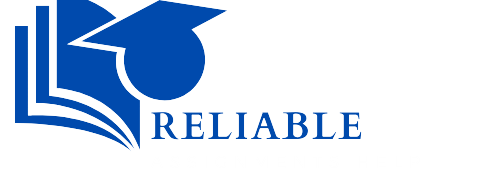Module 3 – SLP – Cyber threats and solutions
Cyber solutions start with a strong defense and protection methods. Cyber defenses can include strong policies for passwords, software usage and control, encryption techniques, and prevention of unauthorized usage.
For this SLP, answer the following:
- Describe some of the traditional methods of defense for cyber threats (i.e., encryption, software controls, policies, physical security, etc.)?
- What are some of the latest methods for cyber defense?
Assignment Expectations
Properly cite the quotations that you use to support your statements. Use in-text references as needed to support your points.
Length: This Case Assignment should be at least 3–5 pages, not counting the title page and references.
References: At least three references should be included from academic sources (e.g., peer-reviewed journal articles). Required readings are included. Quoted material should not exceed 10% of the total paper (since the focus of these assignments is critical thinking). Use your own words and build on the ideas of others. When material is copied verbatim from external sources, it MUST be enclosed in quotes. The references should be cited within the text and also listed at the end of the assignment in the References section (preferably in APA format).
Organization: Subheadings should be used to organize your paper according to question.
Grammar and Spelling: While no points are deducted for minor errors, assignments are expected to adhere to standards guidelines of grammar, spelling, punctuation, and sentence syntax. Points may be deducted if grammar and spelling impact clarity.
The following items will be assessed in particular:
- Relevance—all content is connected to the question.
- Precision—specific question is addressed. Statements, facts, and statistics are specific and accurate.
- Depth of discussion—points that lead to deeper issues are presented and integrated.
- Breadth—multiple perspectives and references, multiple issues and factors considered.
- Evidence—points are well supported with facts, statistics, and references.
- Logic—presented discussion makes sense; conclusions are logically supported by premises, statements, or factual information.
- Clarity—writing is concise, understandable, and contains sufficient detail or examples.
- Objectivity—use of first person and subjective bias is avoided.
- Introduction/Conclusion: Must be included
- Transition Words: Must be included
Required Reading
- 2023 OpenText Cybersecurity Threat Report reinforces need for multilayered security approach. (2023). PR Newswire. Retrieved from Trident University Library.
- Alsubaie, M. (2021). A strategic vision for combating cyberterrorism. Journal of Information Security and Cybercrimes Research, 4(2), 173-184. Retrieved from Trident University Library.
- Buchanan, B. (2016). The life cycles of cyber threats. Survival, 58(1), 39-58, Retrieved from Trident Online Library
- Cisco. (n.d.). Cisco Cyber Threat Defense Solution Overview. Retrieved from http://www.cisco.com/c/en/us/solutions/collateral/enterprise-networks/threat-defense/solution_overview_c22-700869.html
- Cybersecurity (2022, Mar 22), Preparing the next phase of US cyber strategy. Retrieved from https://www.atlanticcouncil.org/in-depth-research-reports/issue-brief/preparing-the-next-phase-of-us-cyber-strategy/
- Fact Sheet: 2023 DOD Cyber Strategy. (2023, May 27). Targeted News Service. Retrieved from Trident University Library.
- Proactive cybersecurity: Sometimes offence is the best defense. (2023). CIO. Retrieved from Trident University Library.
- Wright, A. (2015, May 8). Cybersecurity: The best defense is a good offense. Mysterious Universe. Retrieved from http://mysteriousuniverse.org/2015/05/cyber-security-the-best-defense-is-a-good-offense/
